Author: Marshall Schott
Having roots in ancient Greece, Barleywine is purportedly one of the oldest styles of beer in the world, making its way to England in the 15th century where it was adapted into the malty beverage many recognize today. A relatively common offering in the United Kingdom from the late 19th century, it wasn’t until San Francisco’s Anchor Brewing Company released Old Foghorm in 1976 that most Americans were introduced to this strong style of beer.
As is often the case, brewers in the United States have had their way with Barleywine, morphing it into a style that shares the strength of its English counterpart while typically packing a stronger hop punch. The BJCP describes American Barleywine as:
A well-hopped American interpretation of the richest and strongest of the English ales. The hop character should be evident throughout, but does not have to be unbalanced. The alcohol strength and hop bitterness often combine to leave a very long finish.
My love of consuming multiple crushable glasses of beer in a sitting is largely to blame for my general lack of interest in brewing this style. It’s not that I don’t like Barleywine, it’s just that I’ve never thought it very smart for me to have an entire keg of it on tap. However, inspired largely by a delicious version my buddy Matt Humann makes, as well as a personal goal to branch out a little more, I decided to brew my first ever American Barleywine using less conventional methods to see how I’d do!
| BREWING THE BEER |
The inspiration to brew this beer struck the evening before I actually brewed it, meaning I had little time to acquire all of the ingredients to match Matt’s Night-Night Juice recipe. So, I went with what I had on hand.
Short & Shoddy American Barleywine
Recipe Details
| Batch Size | Boil Time | IBU | SRM | Est. OG | Est. FG | ABV |
|---|---|---|---|---|---|---|
| 5.5 gal | 30 min | 76.7 IBUs | 15.7 SRM | 1.100 | 1.026 | 10.0 % |
| Actuals | 1.099 | 1.018 | 10.9 % | |||
Fermentables
| Name | Amount | % |
|---|---|---|
| Lamonta American-style Pale Malt (Mecca Grade) | 16 lbs | 66.67 |
| Metolius Munich-style Malt (Mecca Grade) | 4 lbs | 16.67 |
| Gladfield Toffee Malt | 1 lbs | 4.17 |
| Caramel Malt - 120L (Briess) | 8 oz | 2.08 |
| Honey Malt | 8 oz | 2.08 |
| Light Dry Extract | 2 lbs | 8.33 |
Hops
| Name | Amount | Time | Use | Form | Alpha % |
|---|---|---|---|---|---|
| Horizon | 55 g | 30 min | First Wort | Pellet | 14.1 |
| Horizon | 60 g | 10 min | Boil | Pellet | 14.1 |
Yeast
| Name | Lab | Attenuation | Temperature |
|---|---|---|---|
| Flagship (A07) | Imperial Yeast | 75% | 60°F - 72°F |
Notes
| Water Profile: Ca 4 | Mg 1 | Na 10 | SO4 6 | Cl 2 |
Download
| Download this recipe's BeerXML file |
I ran out to the garage to prepare for the following day’s brew immediately after settling on the recipe. Expecting a considerable hit to my efficiency given the high target OG and shoddy methods, I adjusted my expected efficiency way down, which meant more malt would be needed. This was by far the heaviest grainbill I’ve ever used for a 5 gallon batch of beer.
With the grains weighed out, I began collecting the entire volume of water required for this no sparge batch. It was not adjusted with any minerals or acid, just carbon filtered.
I then proceeded to mill the grain with the help of my yet-to-realize-he-will-love-beer-one-day son, Roscoe, who treated the drill like it was a superhero weapon (don’t fret, this picture was staged, I helped for the actual milling).
Once everything was prepped, I plopped my heat stick in the water and set the timer to turn it on a couple hours before I planned to brew the next day. After feeding my kids and preparing them for school the following morning, I went out to find my brewing liquor right around where BeerSmith said it needed to be then mashed in.
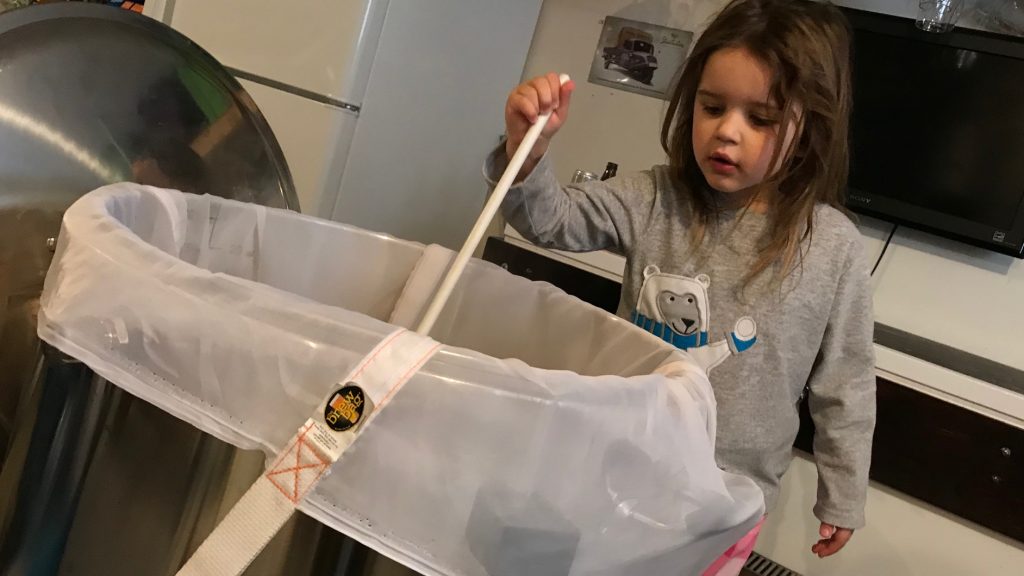
Thanks to the incredible stirring skills of my assistant brewer, the mash temperature was spot on.
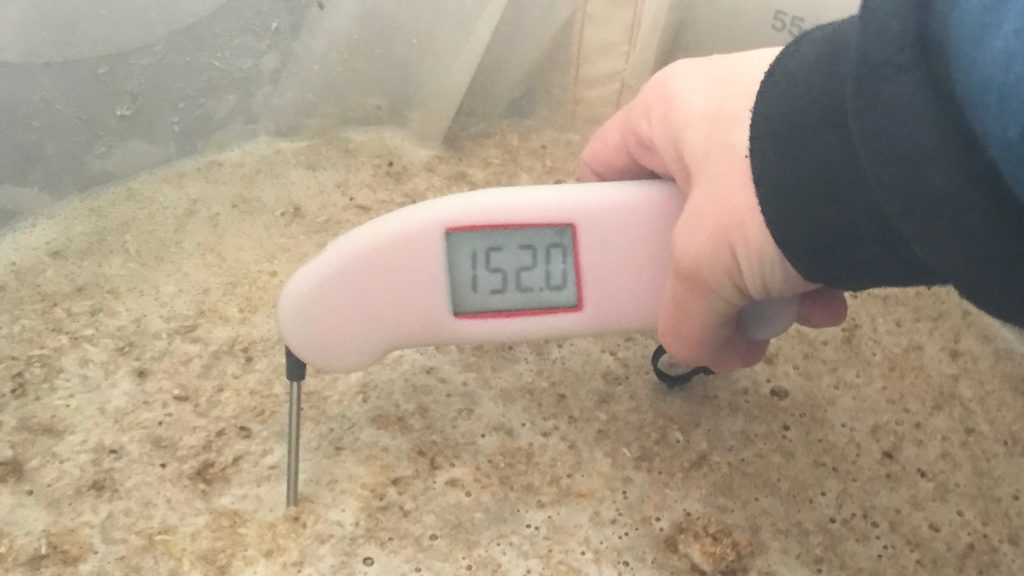
The mash timer was set for 30 minutes, right about the time it would take me to round up my older kids and drop them off at school.
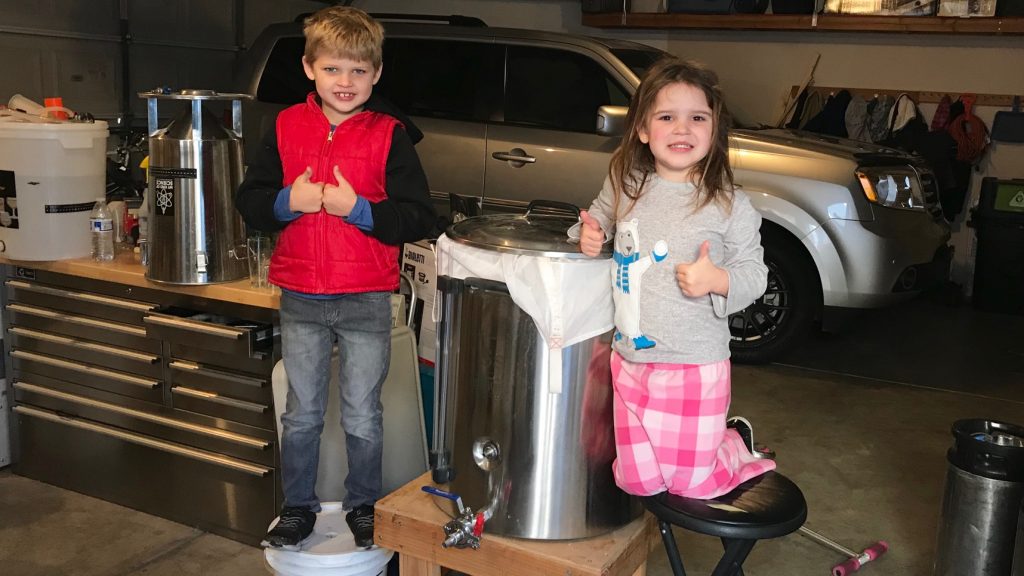
Just before collecting the sweet wort, I took a pH reading showing my failure to adjust the water chemistry resulted in a slightly higher pH than I usually aim for. Nothing I was terribly worried about.
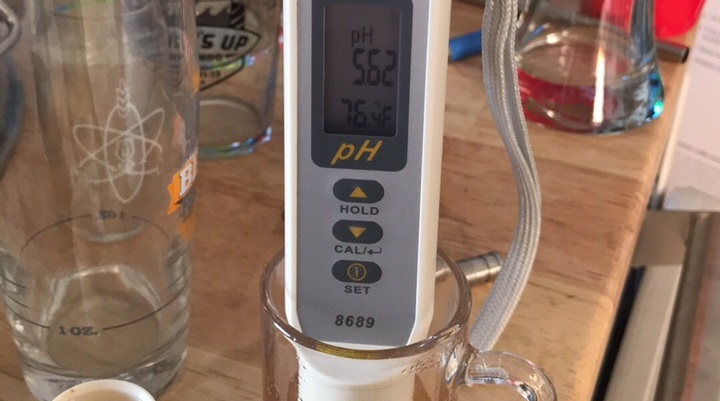
After what ended up being a 33 minute mash rest, I began running the sweet wort off into my graduated bucket, during which I weighed out the dry malt extract (DME).
After transferring the wort to my kettle, I immediately stirred in the DME before turning the flame on in hopes of avoiding any scorching. As the wort was heating up, I cleaned my mash tun using my new favorite cleaning tool. Don’t hate.
I then weighed out the kettle hops. While American Barleywine is known for being quite hoppy, given the abbreviated boil length, I went with a single addition of a high alpha variety, expecting it to lend bitterness, flavor, and some aroma.
When the wort reached a boil, I set the timer for 30 minutes then added the hops as stated in the recipe.
At the completion of the boil, I quickly chilled the wort to as cool as my groundwater would get it, which was 76°F/24°C.
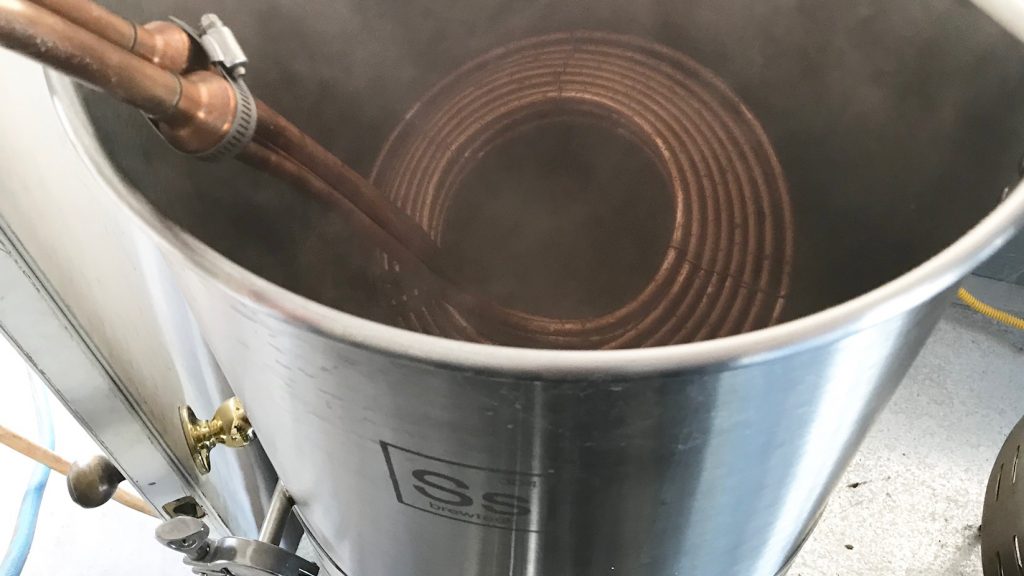
The moment of truth had arrived…
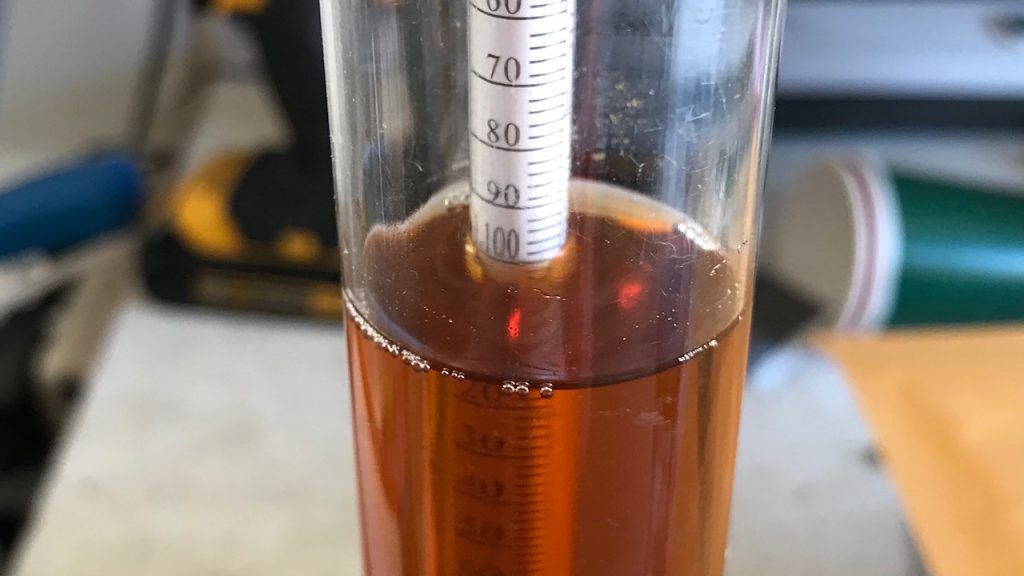
Hoo doggie, that’s a big beer! I was hoping for anything north of 1.095 OG and was quite pleased to see it hit a little higher than that. I proceeded to racking 5.5 gallons/21 liters to a fermentor.
I considered making a vitality starter with some leftover wort, but was feeling lazy and instead pitched a couple packs of Imperial Yeast A07 Flagship directly into the wort.
Wanting to avoid creating jet fuel, I did regulate the ambient temperature of the fermentation chamber to 66°F/19°C, leaving the probe dangling rather than attached to the side of the fermentor like usual. Despite being underpitched, I noticed airlock activity just 8 hours later and things were rocking the following day. Thanks to the large amount of headspace in the Speidel fermentor, I easily avoided a messy blowoff. Fermentation activity began to dwindle just 4 days post-pitch, so I increased the temperature in the chamber to 72°F/22°C. With signs of activity absent after another 3 days, I took a hydrometer measurement confirming a very respectable FG had been reached.
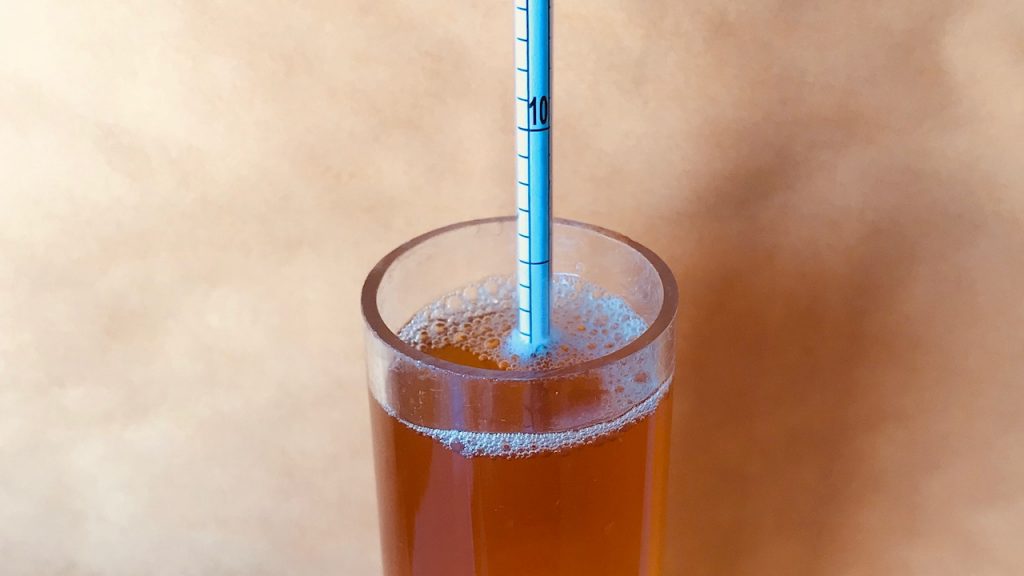
I let the beer sit for 2 more days before making sure the FG was unchanged, at which point I cold crashed using a BrüLoonLock and fined with gelatin.
After a couple days, I kegged the cold beer then placed it in my keezer where it was burst carbonated. Barleywine is a style known to morph as it ages, many believing for the betterment of the beer… but there’s nothing “short” about that, so I collected data after 2 weeks of cold conditioning.
| RESULTS |
A total of 12 people of various levels of experience participated in this Short & Shoddy evaluation. Participants were first asked to identify the style they believed the beer to be based on their perception.
Tasters were then instructed to rate how hoppy, malty, and dry they perceived the beer to be on a 0-5 scale where a rating of 0 indicated “not at all” and 5 indicated “extremely;” these ratings were then averaged.
Tasters were provided a list of common hop, malt, and yeast characteristics then instructed to select from each the one they perceived as being strongest in the beer.
Hop Characteristics
Malt Characteristics
Yeast Characteristics
Next, participants were asked to indicate whether or not they detected any off-flavors in the beer; those who did were provided a list of common off-flavors and instructed to select the one they perceived as being strongest. Out of the 12 participants, 0 reported perceiving any off-flavors.
Tasters were then asked to rate how much they enjoyed the beer on a 0-5 scale where 0 indicated they hated it and 5 indicated they loved it.
Finally, the beer style was revealed to participants and they were asked to rate how representative it was on a 0-5 scale where 0 meant “not at all” and 5 meant “exactly.”
My Impressions: Toasty, rich, caramelly without being too sweet. These are the main characteristics I perceived from this American Barleywine. Even at nearly 11% ABV, the beer wasn’t boozy, though there was little doubt it packed a punch, leaving a slight warming sensation in my throat as it went down. The medium-full body seemed to leave a pleasant tasting coating on my palate that didn’t last quite as long as I expected. While the beer had a very noticeable bitterness, it was balanced by the sweetness of the beer. As for hop aroma and flavor, all I detected was earthy and spicy characteristics, though it was difficult for me to parse out what exactly was derived by which ingredient. Either way, I found even this fresh version of American Barleywine to be much tastier than I expected.
| CONCLUSION |
For my first go at a style I’ve never brewed before, I’ve got to admit, I was pleasantly surprised with how much I enjoyed this American Barleywine. Even fresh, it had many of the characteristics I find desirable in other examples I’ve sampled– a toasty malt character, bitterness balanced by a sweetness that was far from cloying, and a markedly clean fermentation profile. Despite the generally shoddy approach taken to make this beer, neither the participants nor I detected anything in the way of off-flavors, no DMS, no diacetyl, no fusel alcohols.
Based on conversations I had with some tasters following completion of the survey, the only thing this Barleywine was noted as lacking was some of the warmer, even sherry-like characteristics found in aged examples. Besides that, participant ratings on the survey aligned quite nicely with what one might expect from such a beer, and while only a few tasters correctly identified the style, many others chose styles that were arguably close.
Yet again, these results remind that much of what’s deemed necessary to craft good beer may not be, or at the very least, our understanding of certain processes isn’t as deep as we like to think. Wort wants to be beer. Taking just a few standard precautions, such as controlling the fermentation chamber temperature and sanitizing my cold-side gear, I cut enough corners to brew a pretty tasty American Barleywine in just a bump over 2 hours. That’s pretty rad.
It’s highly unlikely I’ll be brewing another American Barleywine again anytime in the near future, even though I liked this one more than I thought, it’s just not the kind of beer I enjoy having on tap. With data collection complete and a good couple gallons leftover, I was thinking it might fun to hang on this keg for awhile to see how it progresses over time.
If you have thoughts about this Short & Shoddy brew, please feel free to share in the comments section below!
Support Brülosophy In Style!
All designs are available in various colors and sizes on Amazon!
Follow Brülosophy on:
FACEBOOK | TWITTER | INSTAGRAM
If you enjoy this stuff and feel compelled to support Brulosophy.com, please check out the Support page for details on how you can very easily do so. Thanks!

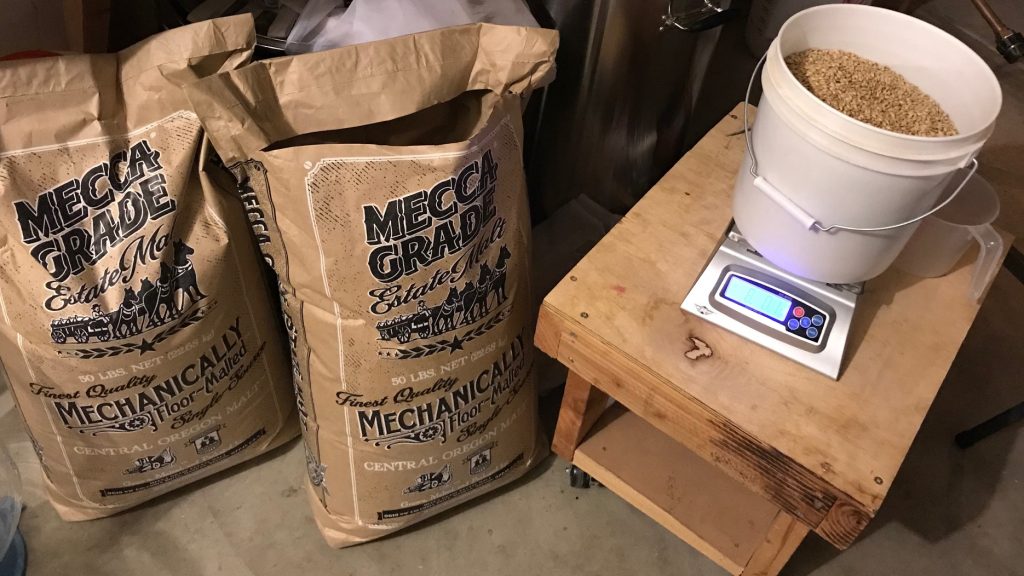
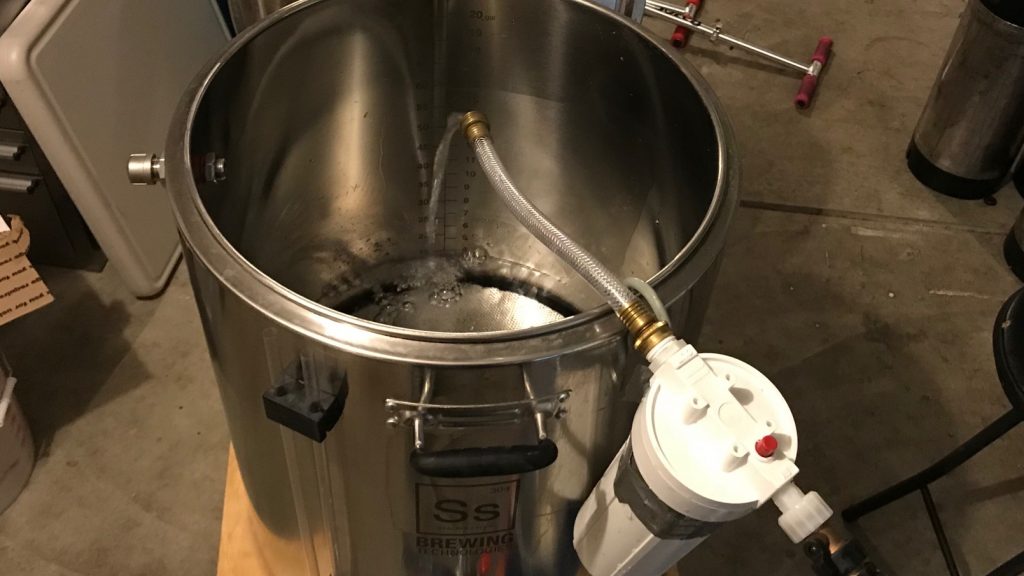
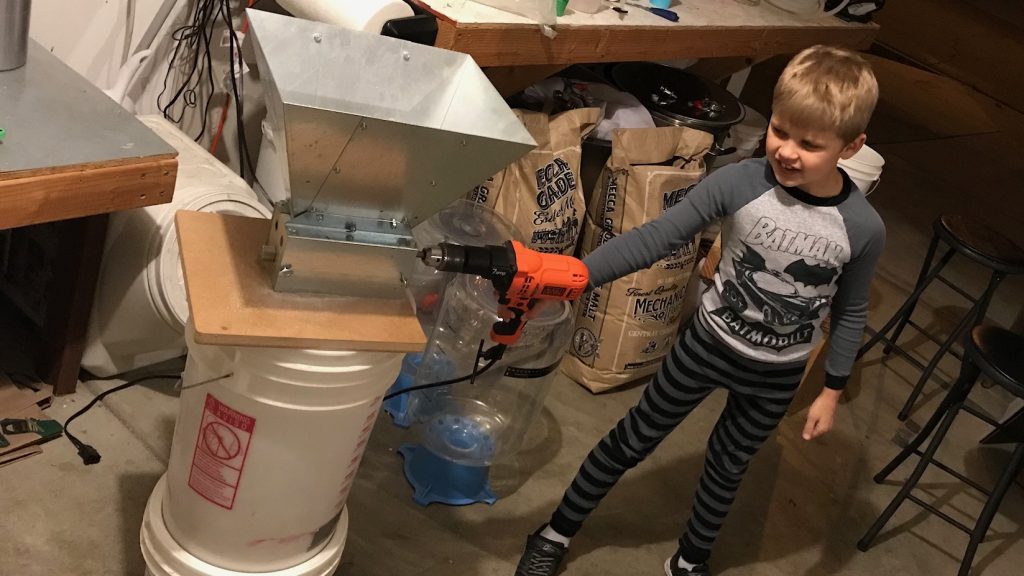
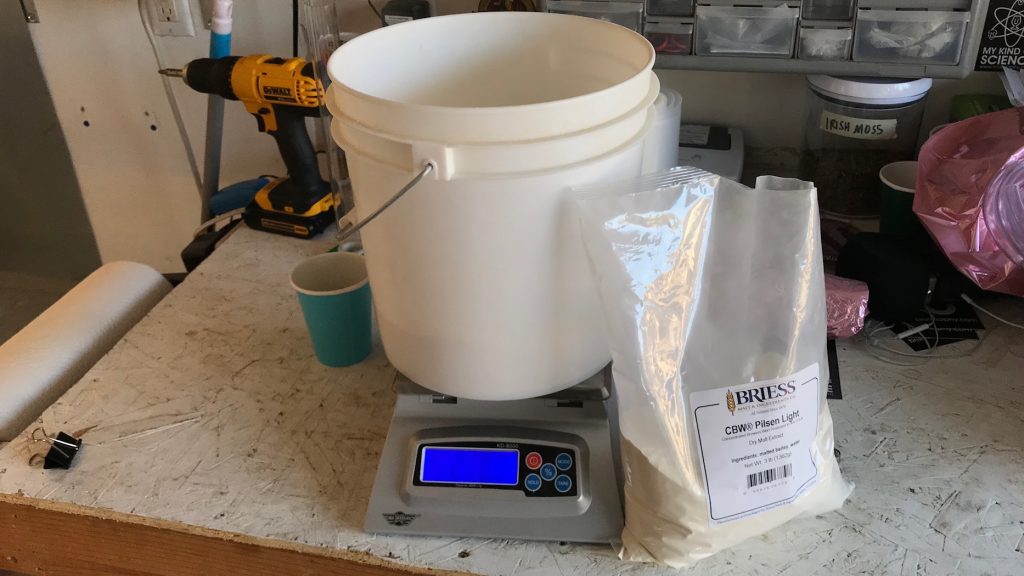
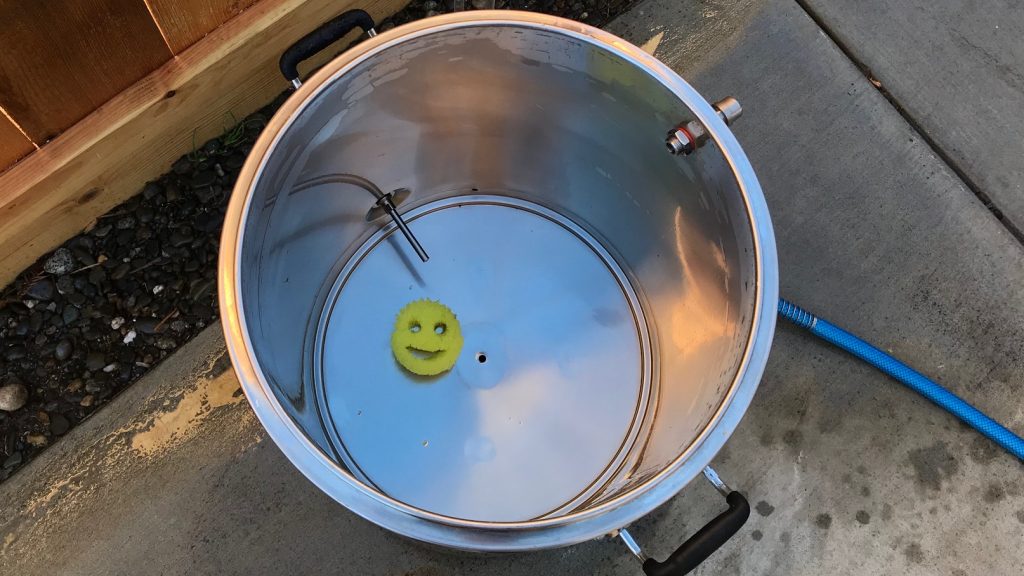
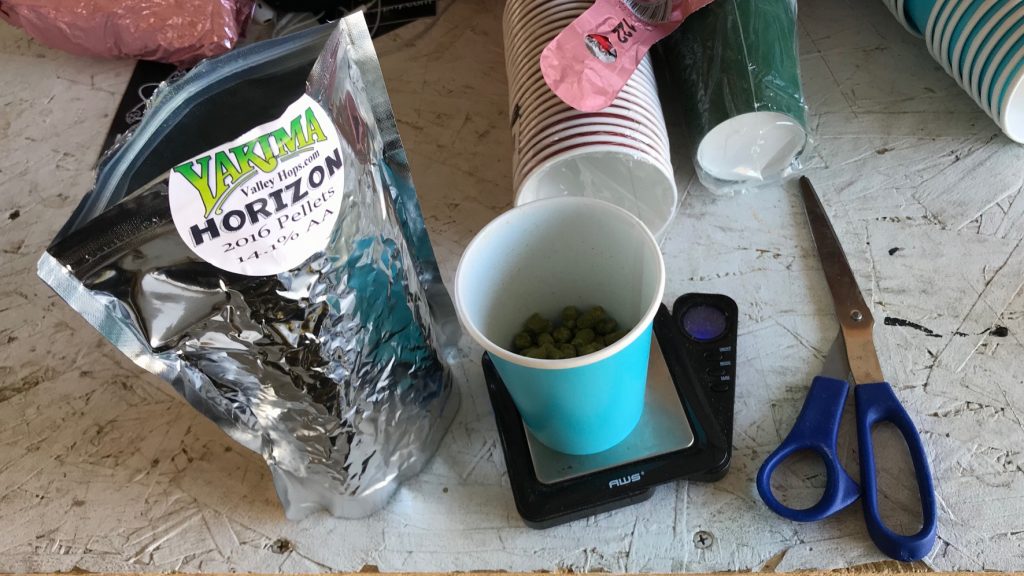
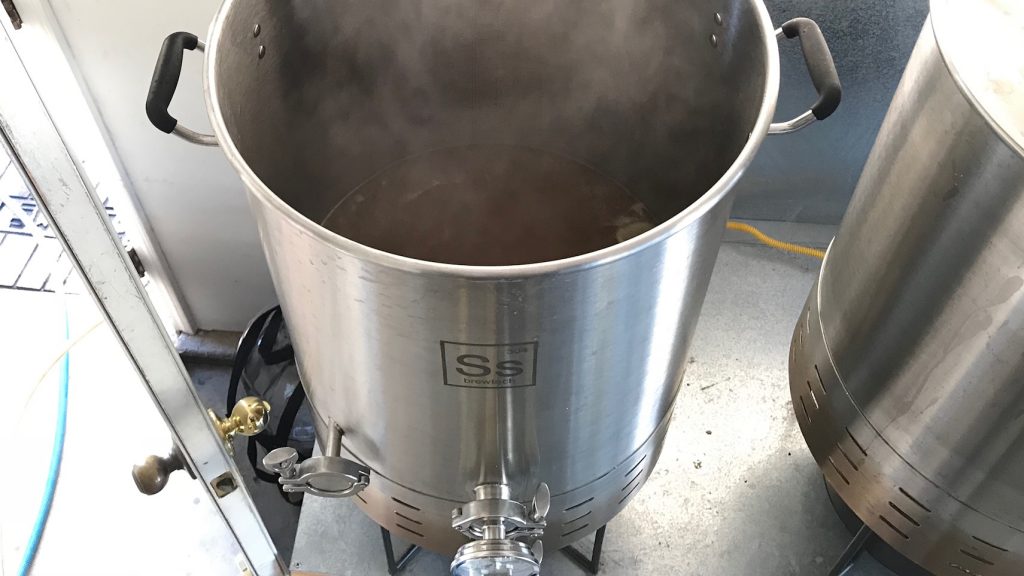
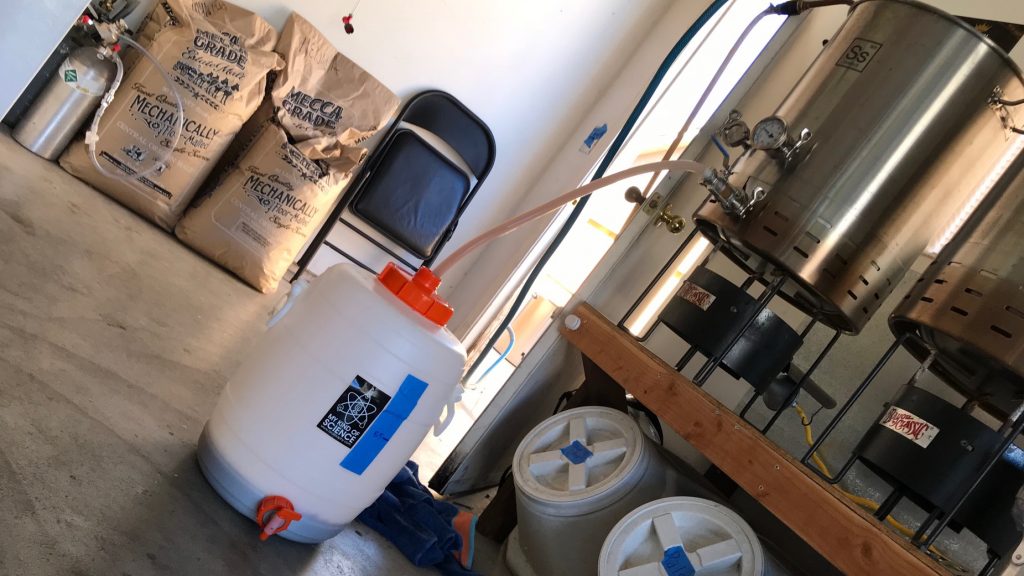
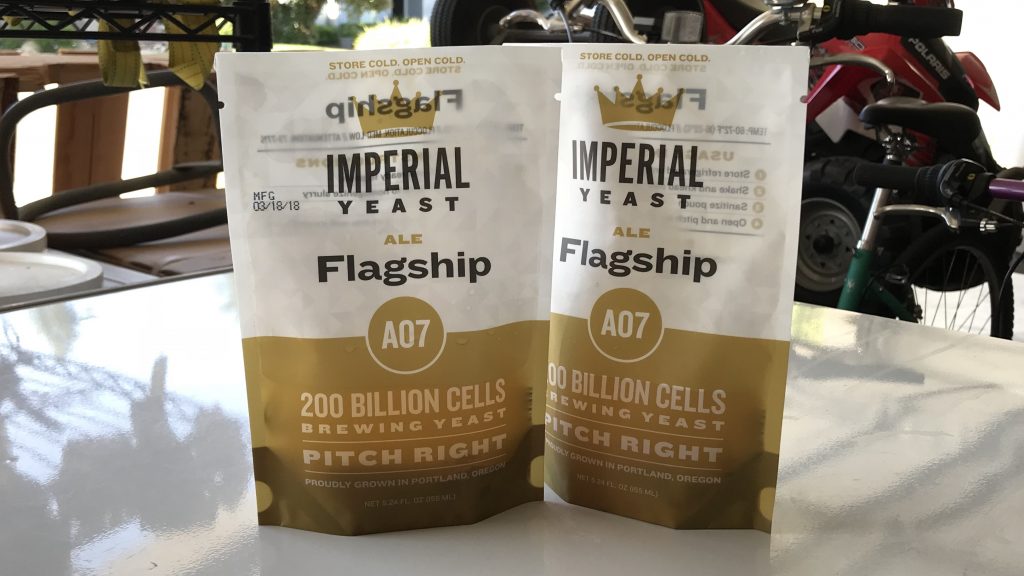
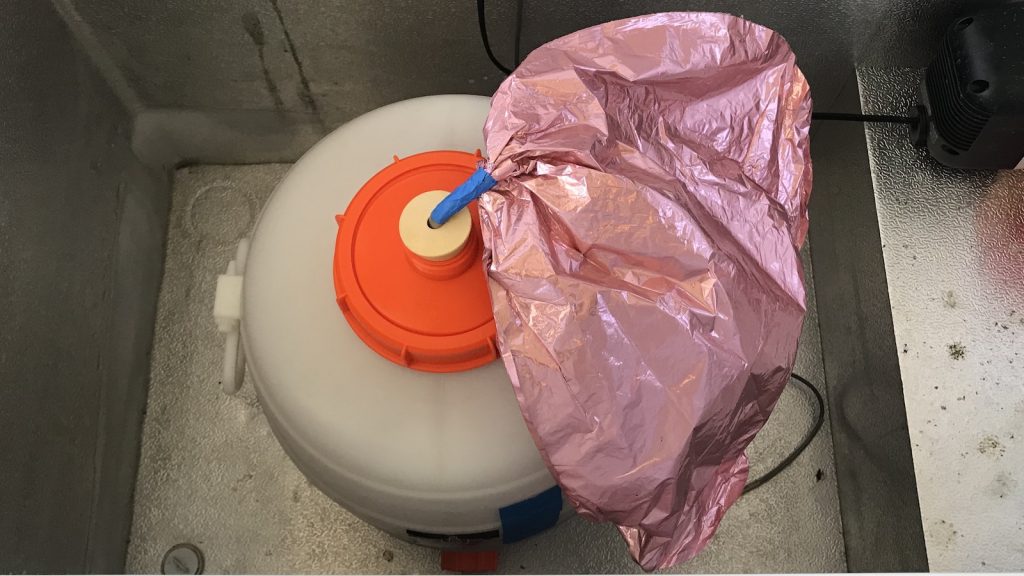
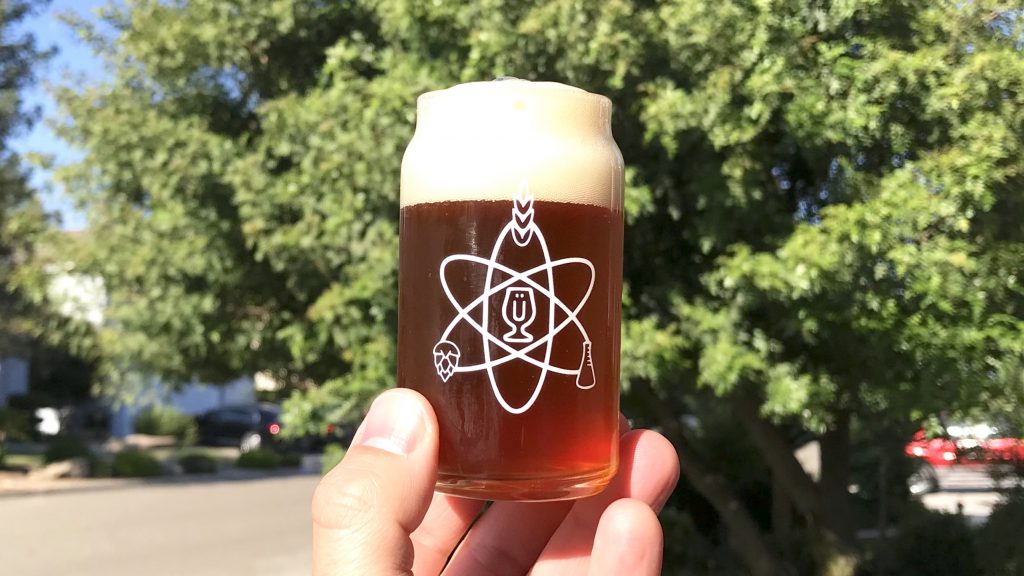
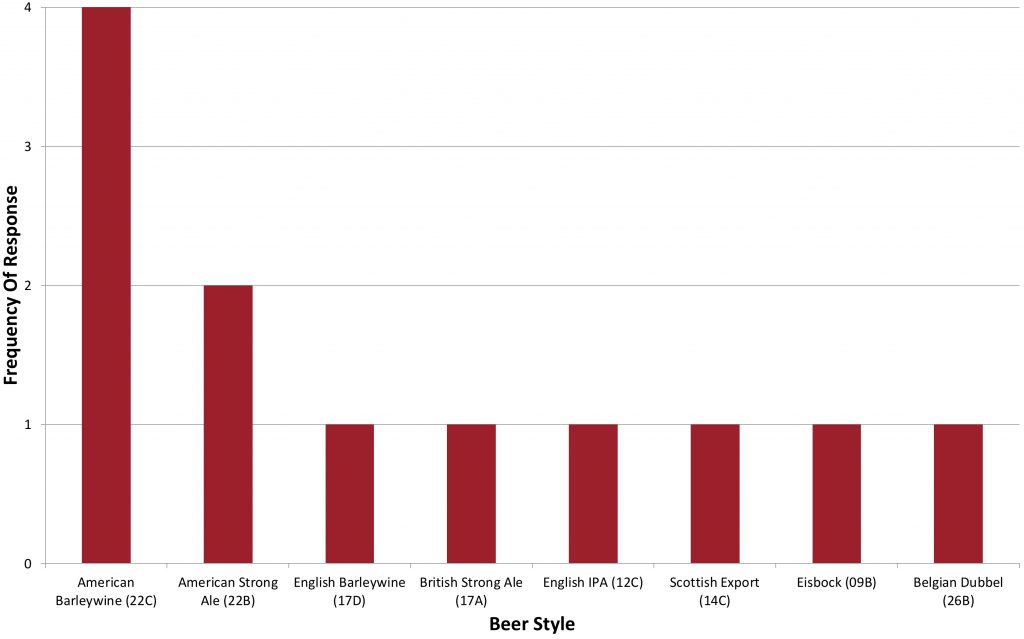
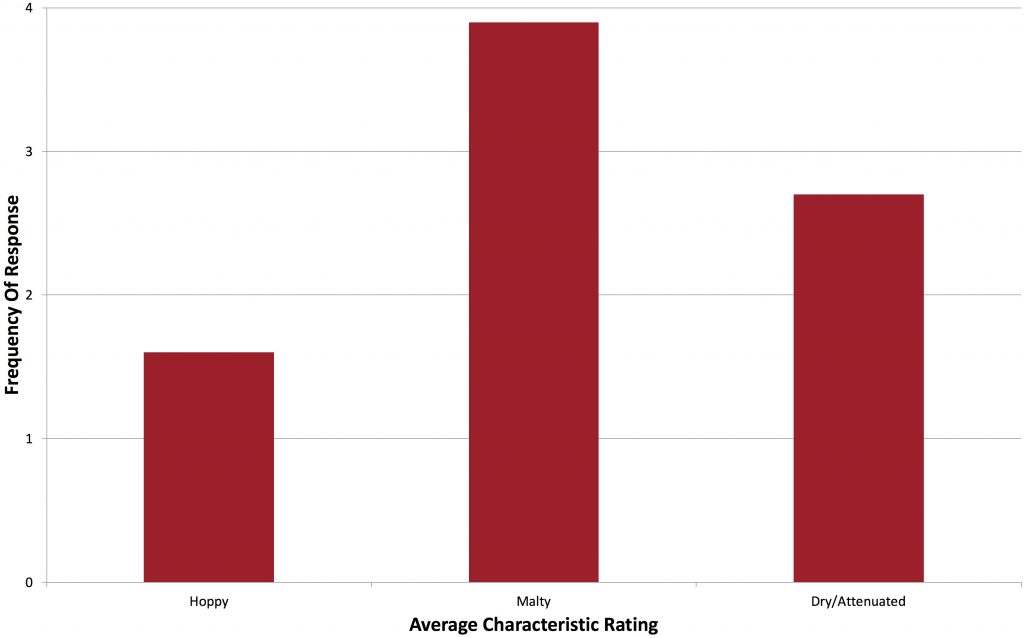

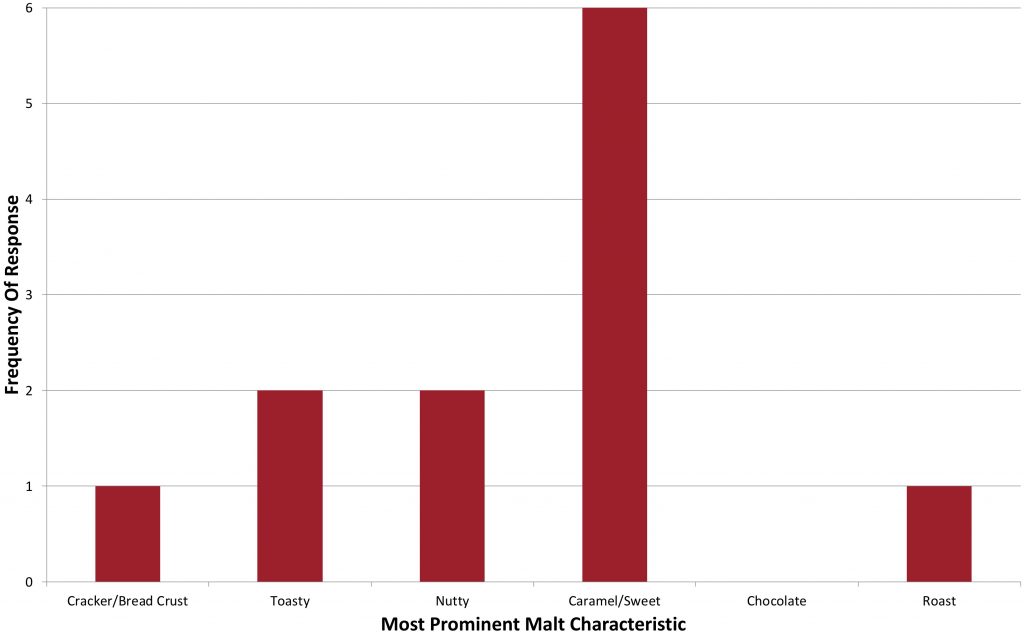













23 thoughts on “Short & Shoddy | American Barleywine”
It would be great to ask participants why they don’t rate the beer a 5/5. I think you’ve done a great job demonstrating that an experienced brewer can cut a lot of corners and still make beer that is at least ‘OK’. So the remaining question is, can a short and shoddy beer ever be great? And what is stopping it from being great?
The fact so many members of The Brü Club had S&S beers advanced to the finals for NHC this year has got to mean something.
If I remember correctly, high alpha hops aren’t good for aging because they turn to a cardboard flavor. Or something. I dunno, I’ve only made one myself.
I’ve never heard that… but I’ll look into it.
I guess html doesn’t work. Dawson’s “Vintage Beer” explains it. Here’s the really long url: https://books.google.com.kw/books?id=ANFUAgAAQBAJ&pg=PA46&lpg=PA46&dq=vintage+beer+alpha+acid&source=bl&ots=oE58apNFYY&sig=Tg_skfjnKatVANM9LBQs61Sn51w&hl=en&sa=X&ved=0ahUKEwiX_fGm-4zbAhVGXRQKHajqASUQ6AEIZjAK#v=onepage&q=vintage%20beer%20alpha%20acid&f=false
Awesome, the fact that if fermented to a point where it was sweet but not cloying is fantastic in this abbreviated method. I’ve realized that not cloying is key in my barley wine enjoyment. Also looks like a good opportunity for a parti-gyle extra-double-bonus short & shoddy beer.
What was your brewhouse efficiency?
Is it listed in the article or am I just supposed to figure it out?
58%
If it is palatable so early just think how great this will be if you give it another six months. Love the kid photos, btw!
That’s the hope!
Great post as always! Any plans on a exbeeriment with a NEIPA where one is fermented with BrüLoonLock vs one with no BrüLoonLock?
It’s on the list 🙂
It’s interesting this beer was drinkable so quickly with almost no warm conditioning. I’d be very interested to see more experiments exploring conditioning/maturing, though I can see it would be tricky to exclude confounding variables if they were brewed at other times. My beers definitely improve over 6 weeks in the bottle, but maybe that’s just carbonation and clarity, and not much else of significance is going on.
Was the extract added to hit the OG because of the short & shoddy method? Or did your friend’s recipe call for it? That looked like more of a grain bill for a 10 gal. batch! I presume your friend usually does a long boil to hit that OG, yeah?
Extract was planned because I saw it in a ton of Barleywine recipes online, I think it’s used to add fermentables without contributing too much in the way of more body… but I’m not sure. I accounted for the short boil by reducing the volume of brewing liquor, so OG hit my target. I could’ve used more grain instead of DME, but didn’t because, again, I saw a lot of recipes online that use DME.
I made my first Barleywine last October using WLP510. It’s been “cellaring” in my basement in Grolsch bottles for 6 months now though I’ve been sampling it every two weeks or so. I bittered with Northern then did a 45 minute with Hersbrucker and a 15 with Spalt. At 13.1%, it’s got a serious kick. My family calls it a “ninja pint” because it sneaks up on you and kicks your ass. For those of you that keg your Barleywines, my hat is off to you. I don’t have the courage to do that.
“don’t hate”–haha, my mom had one of those smiley-face sponges, so I kinda feel like she’s smiling at me through this post. Thanks. Always enjoy your articles.
“Wort wants to be beer.”
I love this quote and to me perfectly illustrates why I visit this blog on a regular basis. As a scientist I listened to my local brew shop and followed directions to the “T”, but after a few batches I started not csring so much aboht numbers and more about beer. Keep the sanitation and you will have good beer in the end.
Cheers and thank you for this great resource.
AaA
I’ve tried a few short and shoddy brews and, although I was initially happy with the results, as the beers matured I decided that they didn’t develop the same level of complexity that I expect. They were all kind of bland.
Then, at a recent Midnight Carboys meeting I was tasting one of the member’s beers before I knew who had brewed it and I made the comment “it tastes like a short and shoddy brew” and it was! It was brewed in 2 hours. So the fact that I can apparently taste the difference and call it out as a short and shoddy attribute leads me to believe that something is being lost in this process.
My first guess is that short mash lengths aren’t pulling as much material out of the malt as longer mashes. The lower extracts you get in S&S brews fit with this, but I wonder as well as extracting less sugars you are also extracting less, more complex, flavour compounds? If so, then these differences may become more apparent as the beer matures and will probably be more apparent in some styles of beer. I tend to brew British best bitters so the flavour is all about a delicate balance between the malt and hops with nothing dominating so it is possible to (ideally) taste a lot of subtle things going on in a beer that is very drinkable. Maybe your British Golden ale is the nearest equivalent in this group. My S&S beers have no defects but are kind of one-dimensional which is disappointing for me.
The results from your 30/60 minute xbmt kind of indicate that the shorter mash provides inferior malt flavour and mouthfeel, but maybe not conclusive.
I’m thinking trying a semi-S&S brew next with a 60 minute mash but then a 30 minute boil to see if that works for me.
I know you had plans to do another mash time xbmt so maybe a 20/60 minute trial with a best bitter recipe?
I love the way that when I get an idea like this I start digging through your site to try and find supporting evidence. Keep up the good work.
Do you have a BruLoonLock how to somewhere? My last cold crashed sucked so much blowoff liquid back into the beer I could have cried.
Here you go: https://brulosophy.com/2018/05/10/7-methods-for-reducing-cold-side-oxidation-when-brewing-beer/
I have never tried barley wine, so I am not sure what to expect from it. I am more of a grape wine guy due to its colour and the smell, so that’s why I stick to it. My friends are taking me to a barley wine tasting next month.